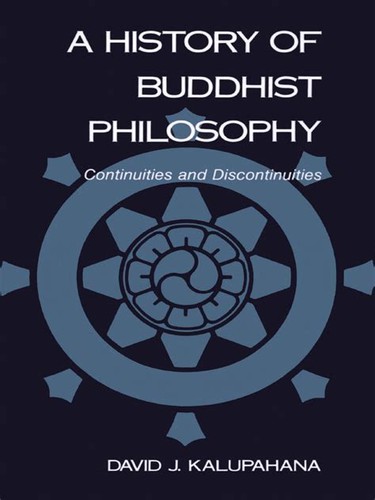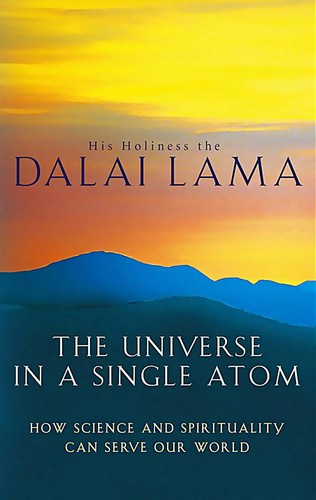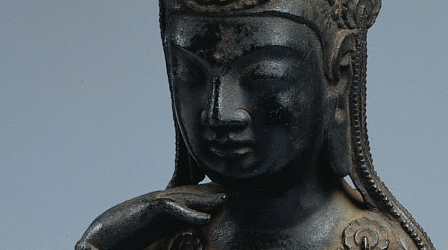Buddhist Philosophy in Dialogue
Subscribe to this topic via: RSS
How Buddhists have engaged in philosophical debates both among themselves and with others—across history and up to the present day.

Two Buddhist monks and a Vietnamese-American dental student lean on a hospital bed chatting while they wait to see a doctor in 2010. (Eddie Harrison, Public domain)
Table of Contents
Books (21)
Featured:
-
⭐ Recommended304 pages
-
⭐ Recommended
-
But gaining mystical experience is not the purpose of our spiritual practice. The purpose of spiritual practice is to empty ourselves of self-identity.
-
264 pages[recommended but under copyright]
See also:
Canonical Works (34)
Featured:
-
I see some fervent mortifiers who takes it easy reborn in a place of loss. But I see another fervent mortifier who takes it easy reborn in a good place, a heavenly realm.
-
⭐ Recommended
I do not dispute with the world; rather, it is the world that disputes with me.
-
There is, brahmin, a sense in which you could rightly say that I’m a teacher of annihilationism. For I teach the annihilation of greed, hate, and delusion, and the many kinds of unskillful things.
-
… it is only here that there is the contemplative
-
‘What does your teacher say, what does he teach?’ Being asked thus, friends, you should answer: ‘Our teacher, friends, teaches the removal of desire and lust.’
-
‘This contemplative Gotama whom you praise is a nihilist, one who doesn’t declare anything.’
‘I tell you, venerable sirs, that the Blessed One righteously declares that “This is skillful.” He declares that “This is unskillful.”’ -
The Buddha draws out his interlocutor’s own wisdom to answer a tricky question.
-
… when a mendicant explains what is not the teaching as the teaching…
-
The Buddha refuses to say that there is no self.
See also:
Readings (63)
Featured:
-
⭐ Recommended
Unlike cadaver donation in the West, which has to a large degree maintained the anonymity of the body used to teach medical students, the Taiwanese Tzu Chi Buddhist Silent Mentor programme at the centre of this article foregrounds the identity of the training cadaver as an essential element of medical pedagogy
-
What is meant by its central philosophical concept of “absolute nothingness,” and how did the Kyoto School philosophers variously develop this Eastern inspired idea in dialogue and debate with Western thought and with one another?
-
An excellent overview of the history of Indian Buddhist metaphysics from the perspective of the Tibetan (Mādhyamika) siddhānta literature.
-
To deal with social dukkha, habitual tendencies rooted in the Three Poisons have to be identified and redressed in the constitutive social, cultural, and political environments too. In other words, Buddhist social theory recognizes that the manifestations of the Three Poisons are as much a matter of institutionalized, normative knowledge-practices as they are private, personal tendencies.
-
The Tathagata’s lion’s roar has content, and its content varies in the different suttas that contain the simile.
-
This study examines the phenomenon of borrowing and reusing portions of texts without attributing them to their ‘legitimate authors’ within the Buddhist world of contemporary Tibet. It shows that not only is such a practice not at all infrequent and is often socially accepted, but that it is used in this case as a platform to advance specific claims and promote an explicit agenda. Therefore, rather than considering these as instances of plagiarism, this essay looks at the practice of copying and borrowing as an exercise in intertextuality, intended as the faithful retransmission of ancient truths, and as an indication of the public domain of texts in Tibet.
-
Widely read as he was in Western philosophy, one of Nishida’s main concerns was to find possible points of contact between his own heritage and the philosophical background of the modern civilization that was taking shape in Japan during his lifetime.
-
The Kauṣītaki Upaniṣad employs the chariot imagery in the service of a unitary notion of, and perpetual correspondence between, the different particles of being that make up the different dimensions of a person. The particles of intelligence (prajñā) and the breath are all fastened together just as in a chariot the rim is fastened to the spokes and the spokes to the hub.
-
Even as groups like the International Network of Engaged Buddhists are attempting to frame a unified Buddhist position on environmental issues, Buddhists in different places are interpreting and adapting Buddhist teachings in ways specific to and meaningful in each society. Can the efforts of Buddhists to develop and implement an environmental ethic or activism in one location be translated into other Buddhist societies?
-
Buddhism does, in fact, contain transcendence and mystery and it is quite capable of taking a seat at the open table of postmodern spirituality.
-
In this article, Bhikkhu Analayo looks at both the Chinese and Pāli versions of the Milindapañha, a classical Buddhist text that deals with the idea of no-self. Analayo begins by briefly discussing the basic principles of debate, followed by translations of both Chinese and Pali texts with his own comments at the end of each section.
-
For an important task of the Zen philosopher is to police the border between the factual and the non-factual, between the sayable and the non-sayable, between the contingent and the necessary. But this task cannot be reduced to just policing. The Zen master must somehow point the disciple to the realm of the non-sayable while at the same time keeping him or her firmly anchored in the sayable.
-
The Buddhist attitude to any such revelation would be that of accepting what is true, good and sound and rejecting what is false, evil and unsound after a dispassionate analysis of its contents without giving way to prejudice, hatred, fear or ignorance.
-
Is the aim to have right view, or go beyond views; or is right view about not being attached to any view?
-
This essay first discusses the use of language in Buddhist epistemology, mainly from a Yogācāra perspective. The author then turns to a semiotic analysis of Buddhist symbols and metaphors as a means of producing knowledge of relative truth.
-
Conversation is a means of accomplishing many subtle and indirect things.
See also:
Audio/Video (21)
Featured:
-
It’s easy to think of Emptiness as the “right” view in an ontological sense. What the sutra is saying is that there isn’t a “right” way to characterize reality. “Thusness” is ineffable. So, Emptiness is not so much the “right” characterization as it is the remedy to our tendency to reify things into essences.
2h 12m -
Tuning in, meditatively, all these things can loosen up. And it’s the loosening that’s the main thing.
1h 29m -
What does it mean to meditate on anger?
1h 13m -
Creativity is a human exercise that is only possible when we are free.
68 min -
⭐ Recommended
On holding ontologies loosely more as communication tools than as arbiters of reality.
See also:




